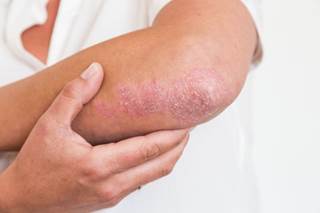December 14, 2018

The ability of secukinumab vs placebo to clear nail psoriasis was evaluated using the Nail Psoriasis Severity Index.
Patients with moderate to severe nail psoriasis experienced clinically meaningful efficacy and significant quality of life improvements with secukinumab treatment, according to study results published in the British Journal of Dermatology.
Researchers in this placebo-controlled, double-blind, randomized study (TRANSFIGURE) evaluated the efficacy of secukinumab (both 150 mg and 300 mg) compared with placebo for moderate to severe plaque and nail psoriasis for a total of 132 weeks. Presented in this publication were the results from the week 32 interim analysis. This time period was chosen because fingernails typically take approximately 6 months to fully grow out to the distal edge from the nail matrix.
A total of 198 study participants were randomly assigned into a placebo group (n=65), a secukinumab 150 mg group (n=67), and a secukinumab 300 mg group (n= 66). The ability of secukinumab vs placebo to clear nail psoriasis was evaluated using the Nail Psoriasis Severity Index (NAPSI), quality of life improvements were evaluated using Nail Assessment in Psoriasis and Psoriatic Arthritis questionnaires on quality of life (NAPPA-QOL), and skin clearance was measured by the baseline Psoriasis Area and Severity Index (PASI).
At week 16, both secukinumab doses were superior to placebo (-10.8% NAPSI improvement for placebo, -37.9% for 150 mg secukinumab, and -45.3% for 300 mg secukinumab; P <.0001). Significant quality of life improvements were also seen at 16 weeks (NAPPA-QOL median scores decreased by 15.8% for placebo, 49.9% for secukinumab 150 mg, and 60.9% for secukinumab 300 mg; P <.0001).
These improvements continued through week 32 (-52.6% NAPSI improvement for 150 mg secukinumab and -63.2% for 300 mg secukinumab). Significant skin clearance was observed at week 16 (PASI 90: 1.7% for placebo and 54.0% and 72.5% for secukinumab 150 mg and 300 mg, respectively; P <.0001) and was sustained through week 32. Headache, upper respiratory tract infections, and nasopharyngitis were the most frequent adverse events, and they were not dose-related. Serious adverse events were rare and non-fatal.
The investigators conclude that “TRANSFIGURE provides some of the most compelling evidence yet in the difficult to treat population of nail psoriasis, evidence of significant efficacy and meaningful improvements in patients’ [quality of life]. Secukinumab thus offers an effective treatment option for subjects with moderate to severe nail psoriasis.”
Disclosure: Funding and assistance for this study were provided by Novartis Pharmaceuticals. See reference for complete disclosure information.
Reference
Reich K, Sullivan J, Arenberger P, et al. Effect of secukinumab on clinical activity and disease burden of nail psoriasis: 32-week results from the randomized placebo-controlled TRANSFIGURE trial [published online October 26, 2018]. Br J Dermatol. doi: 10.1111/bjd.17351








